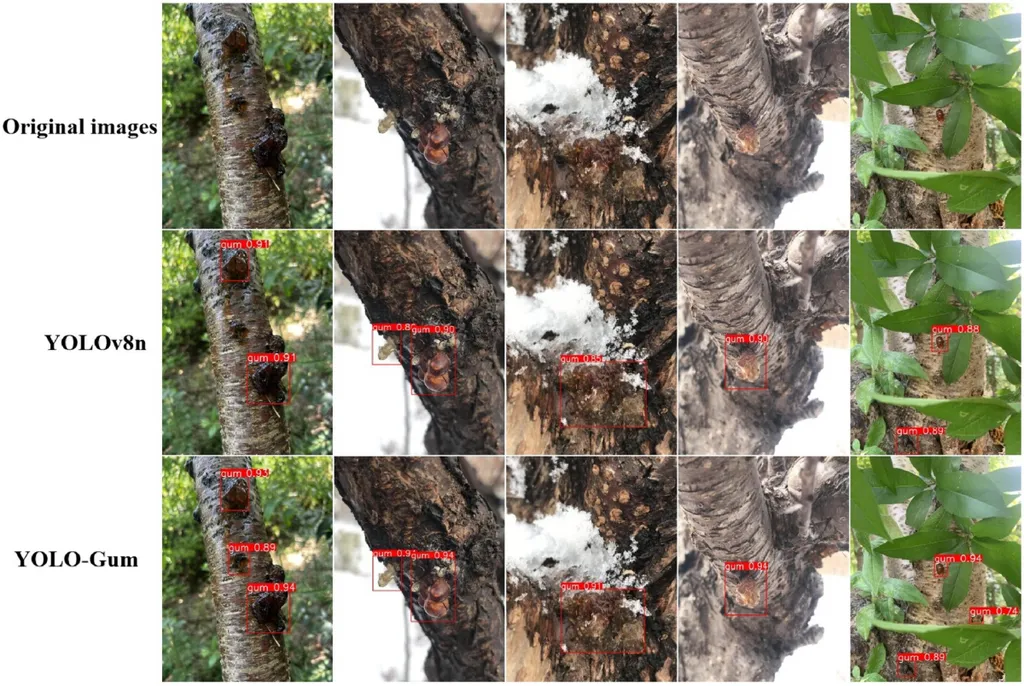In the heart of China’s Henan province, a team of researchers has developed a cutting-edge tool that could revolutionize the way farmers manage one of the most persistent diseases affecting stone fruit trees. Gummosis, a condition that causes trees to exude sticky, gum-like substances, has long been a thorn in the side of peach, plum, and apricot growers. Now, a lightweight detection model named YOLO-Gum, developed by Pingchuan Zhang and colleagues at the College of Computer Science and Technology, Henan Institute of Science and Technology, is offering a promising solution.
The YOLO-Gum model is designed to address the challenges posed by gummosis, which often affects high branches and trunks, making direct observation difficult. “The complex morphological features and low differentiation of gummosis lesions make it a tough nut to crack,” says Zhang. “Our model aims to provide an accurate and efficient tool for early detection and management of this disease.”
The researchers enhanced the original YOLOv8 backbone network by integrating the SENetV2 module, which replaces some convolutional layers to improve the model’s representative capability. They also introduced a cross-scale convolutional feature fusion module (CCFM) structure into the neck structure to integrate detailed features and contextual information. This fusion of structures maintains the model’s lightweight nature while optimizing feature extraction to enhance detection accuracy.
The results are impressive. The improved YOLOv8n model achieved a precision of 92.5% and an F1 score of 74.3%, representing improvements of 5.3% and 6.2%, respectively, compared to the original YOLOv8n model. Moreover, the improved model’s parameters, model size, and floating-point operations are significantly reduced, making it more efficient and easier to deploy in real-world scenarios.
The commercial implications for the agriculture sector are substantial. “This lightweight, precise, and robust model offers technical support for peach tree growth management and robotic vision systems for disease detection,” Zhang explains. “It can help farmers detect gummosis at an early stage, allowing for timely intervention and potentially saving entire orchards from devastation.”
The potential applications extend beyond peach orchards. The YOLO-Gum model’s success in detecting gummosis suggests that similar approaches could be developed for other tree diseases, paving the way for more sophisticated and efficient agricultural management systems. As robotic vision systems become more prevalent in smart agriculture, tools like YOLO-Gum will play a crucial role in ensuring the health and productivity of our orchards.
The research, published in Scientific Reports, represents a significant step forward in the fight against gummosis and other tree diseases. As the agriculture sector continues to embrace technology, the YOLO-Gum model serves as a testament to the power of innovation in addressing long-standing challenges. With further development and deployment, this tool could help farmers worldwide protect their crops and secure their livelihoods, ultimately contributing to a more sustainable and productive agricultural future.

